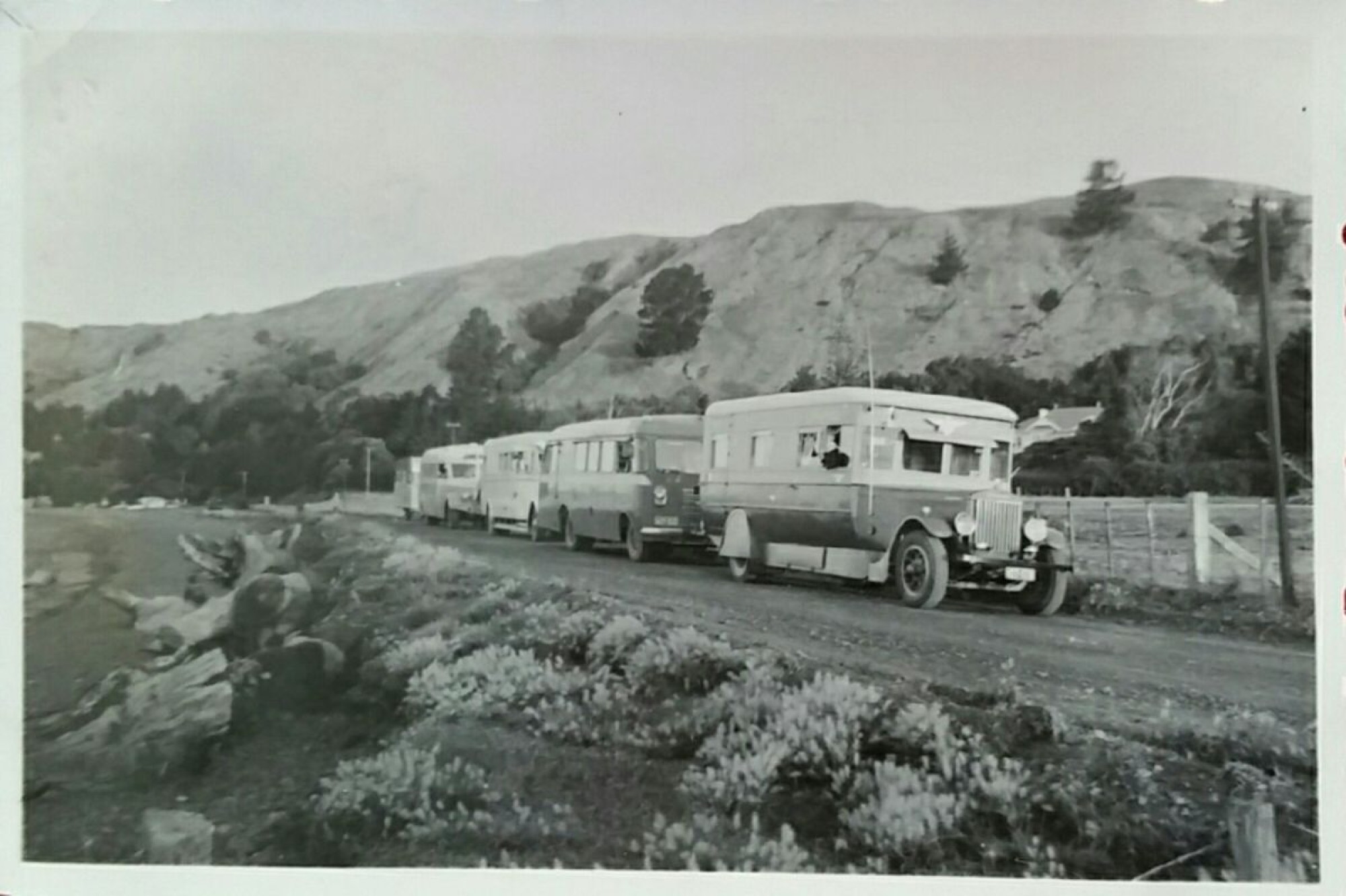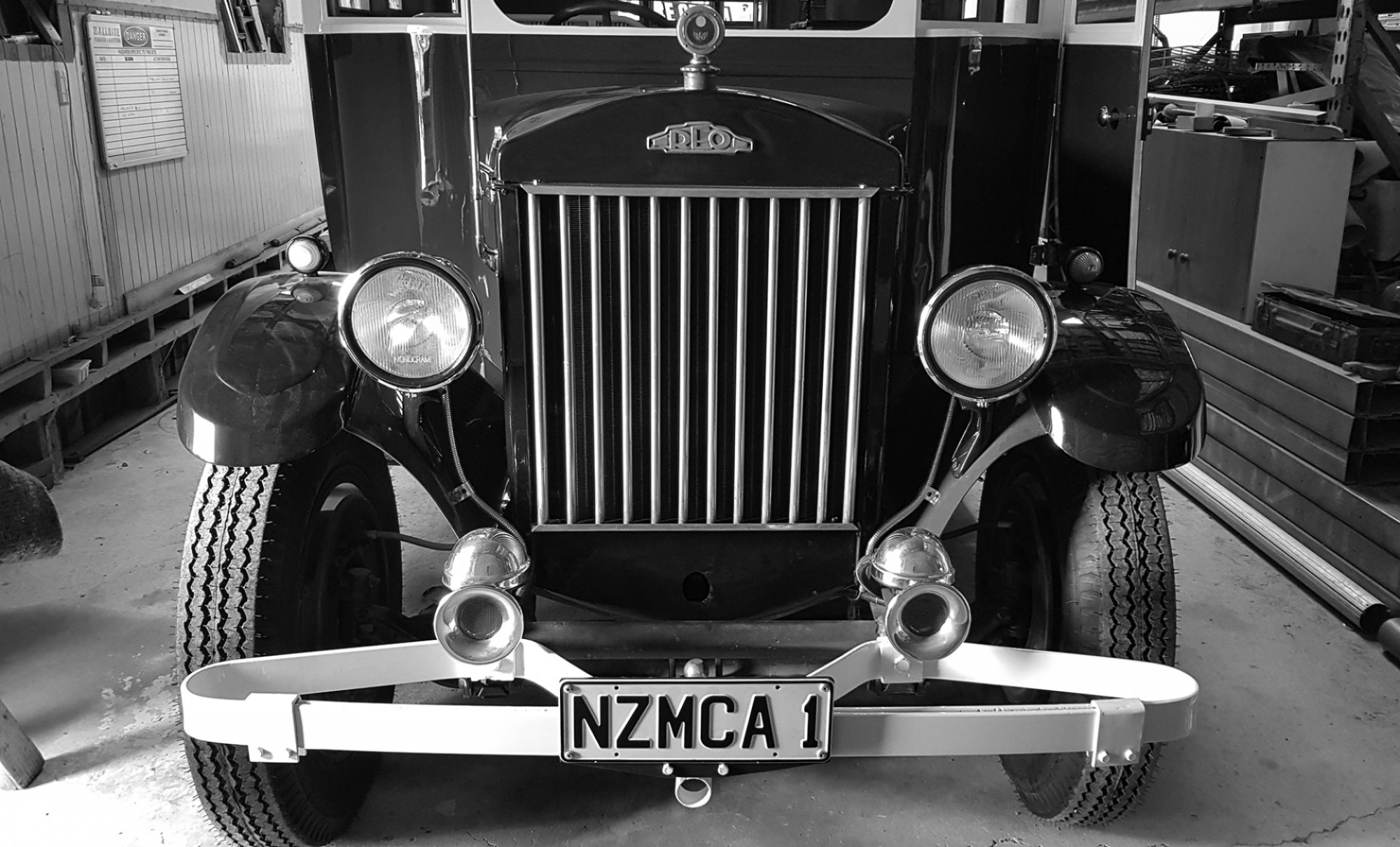The unveiling of the NZMCA’s #1 motorhome – which was originally owned by the Association’s founders, Andy and Gladys Anderson – was the highlight of the recent 63rd National Rally, in Gisborne.
Text by Chris Gaskell, photos by the Eastland NZMCA Area
With its fresh paintwork gleaming under the hall lights, the Eastland Area volunteers’ labour of love was greeted with a standing ovation – and then a rush forward as members queued for a closer look at the motorhome’s beautifully finished interior. Here’s the Eastland Area’s story of how hundreds of hours of volunteer labour have transformed the vehicle from a rusting wreck into an authentic, fully-operational piece of club history.
REO origins
Built by US vehicle manufacturer REO, the vehicle originally arrived in NZ in 1928 as a truck chassis and had a bus body built on it in Auckland. It was initially put to work as a passenger and freight bus by C.E.Gray, of Te Karaka, and did years of service before being bought by Albie Middleton, who continued a daily service from Whatatutu to Gisborne. When Albie bought a Bedford bus from Ormond’s Motors in 1947-8 the REO was sold to Merv Scragg, of Patutahi, and used to transport workers daily to and from Waituhi and Patutahi to the Gisborne freezing works. It was then parked in Cobden Street outside JW McCullough’s where Andy Anderson worked. He pursued the owner until he became the proud owner, and then proceeded to convert the bus (which by that stage had covered some 743,000 road miles and was on its third motor) into his home on wheels.
While getting the NZMCA off the ground, Andy and his family enjoyed many happy holidays in the REO before it was understood to have been sold to other owners in the Tauranga area, who eventually left it in a paddock to rot. Fortunately it was rescued by members of the Tauranga Historic Village Trust, who restored it and fitted a charabanc body to the chassis so it could be used as transport in the village. However, when the Trust went into liquidation the old REO was offered to the East Coast Museum of Transport because it had started its life in the area.

Start of the restoration
That’s where Eastland Area members found it, in a state of considerable disrepair, and put a proposal to the NZMCA Board that what was left of the vehicle should be purchased and rebuilt.
Those involved take up the story: “Right from the start our intention was to have the restoration completed for presentation at the 2019 National Rally and AGM and this was achieved thanks to the dedicated work of many volunteers and generous donors of discounts and free labour.
“We found that when the word got around about what we were doing people were only too happy to offer assistance, for which we are very grateful. We also thank the National Board for seeing our vision and coming with us on this journey to restore this great icon of our fantastic organisation. “Once the original excitement of finding and obtaining the vehicle had settled it was ‘Wow, what a huge job, but we can do it!!’
“As mentioned above, Sunday, 12 June 2016 was the first step into the unknown; we had no clue as to what was in front of the team that had yet to be formed. “Four members went out to ECMOT to start the project. The first job was to remove the charabanc body from the chassis. After this was achieved we connected the REO to Brian Hall’s Prado for a slow tow to the workshop with Ferg McKenzie sitting on a nail box as the driver’s seat.
“For a start, we decided that we would hold a working bee every Wednesday morning so on 22 June, 14 volunteers showed up for the inaugural meet. We completely stripped the vehicle naked in four hours. “We had a mechanic (not a member) come along and offer to recondition the motor. Another non-member joined him along with two of our members. Of these four, it turned out that three had served their apprenticeship together in the 1950s!
“The second week saw all the springs, axles, diff, brakes etc come off. Brake skimming, sand blasting and painting, electrical components, chassis repair, radiator replacement, and the remaking of seven leaves of springs was then attacked. The engine cross member on the chassis had to be rebuilt before it could be sent to the sand blaster.
“The next few weeks were spent spraying degreaser and scraping 90 years of old oil and mud off the many parts. This brought everything up to ‘new’ ready for the rebuild. Meanwhile the mechanics were working hard grinding valves, new rings, and new clutch linings etc. “The springs were disassembled as were the worn-out shackle pins. These pins had to be made new. We needed to find a bonnet and side skirts which were located at the Vintage Car Club store shed and were remodelled to fit.

